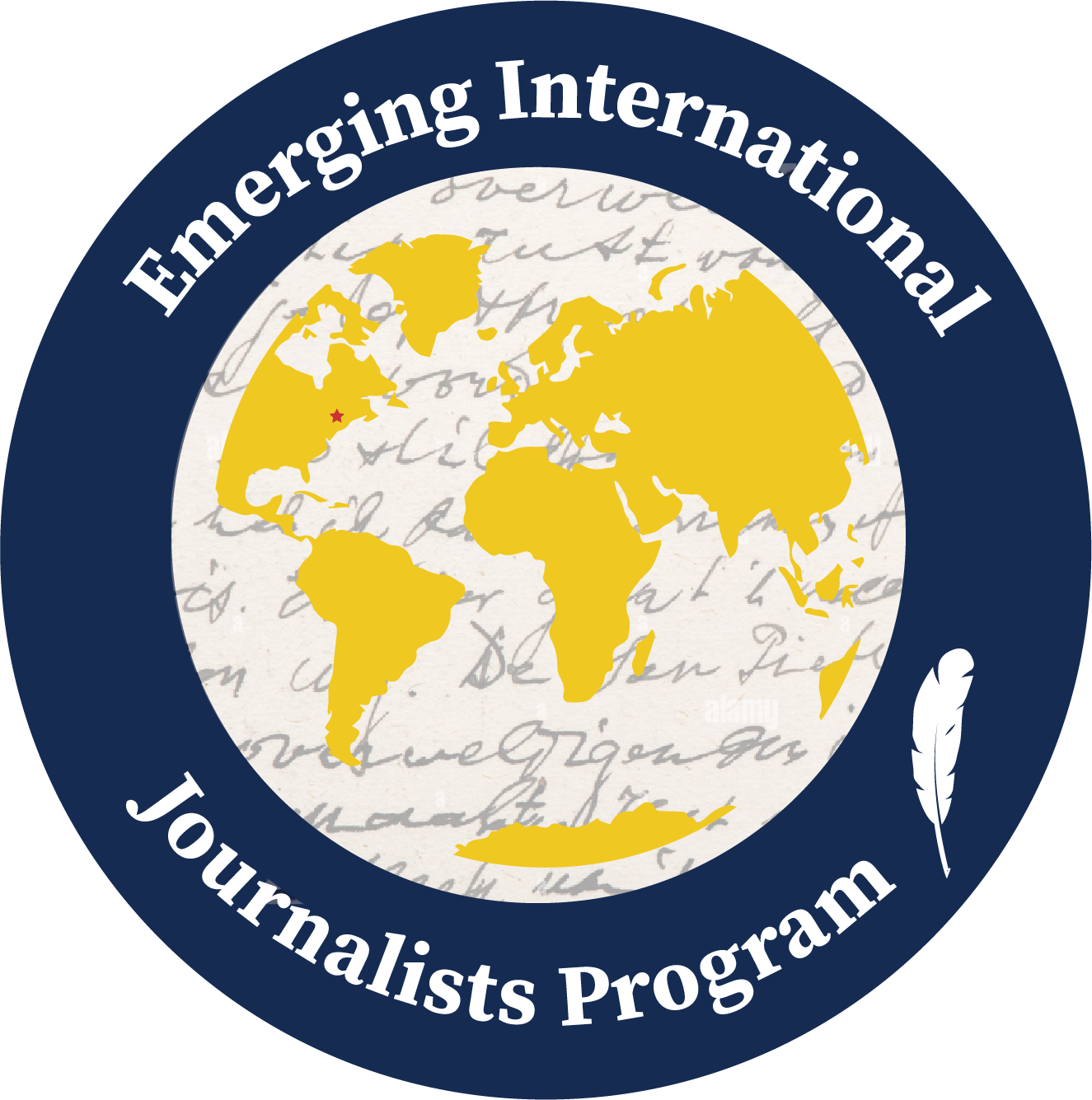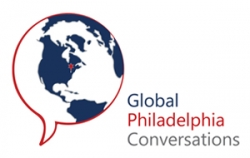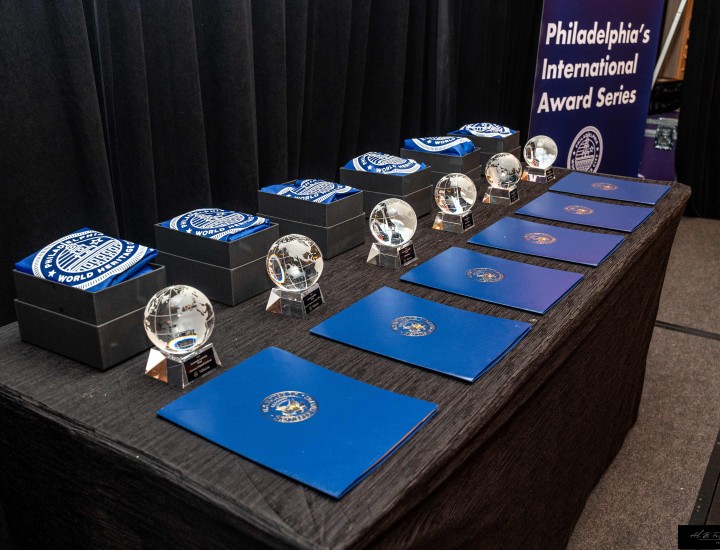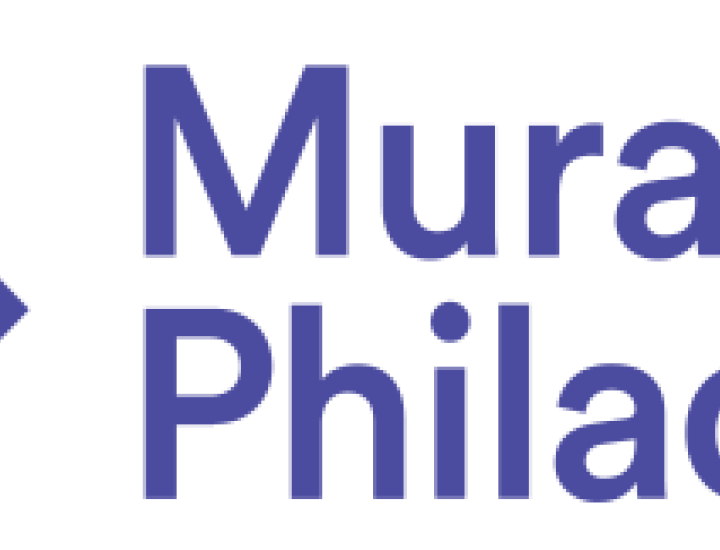A Global Conversation with Jane Golden
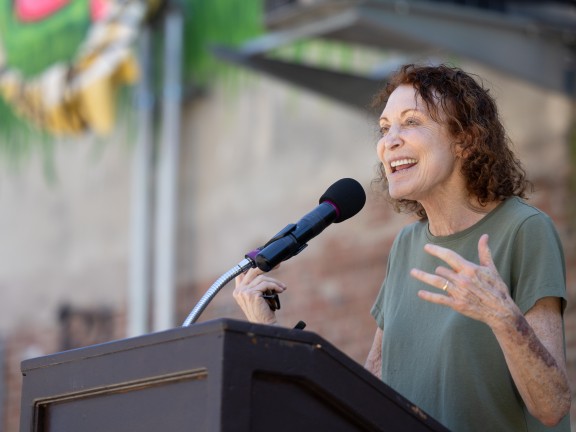
Few leaders have blurred the lines between art, justice, and community quite like Jane Golden. As the founder and enduring spirit behind Mural Arts Philadelphia, she has built a living gallery that reflects the city’s struggles, resilience, and collective imagination. Her genius and passion lies not only in transforming blank walls into symbols of hope, but in transforming the very idea of what public art can do: how it can restore trust, spark dialogue, and knit people together across divides. In recognition of this visionary work, Golden will receive the 2025 Globy Award for Community Leadership from the Global Philadelphia Association this December at the Globy Awards. What follows is a conversation that reveals the deep conviction and humanity that have guided her every mural and every movement.
Jessica Barber: You were planning to study law before you made the decision to devote your life to public art and social transformation. What motivated that shift, and how has your understanding of justice evolved through the lens of art rather than the courtroom or other traditional institutional spaces?
Jane Golden: I was a double major at Stanford: Political Science and Fine Art. I thought long and hard about going to law school, but I never actually went. I moved down to LA after I graduated. My painting professors urged me not to go to law school, but instead to get a studio and paint and get a job that was, as they said, boring. I did all of those things, but I was pretty unhappy just painting in my studio.
I noticed at the time there were just so many glorious murals all over LA and I had always dreamt about doing one. I grew up with parents who talked a lot about a time in our country called the New Deal and the Works Progress Administration. A lot of the work that came out of that movement was what I would call social realism. From a young age, I felt like art could serve a social purpose, and then I had this opportunity to do a mural in Los Angeles. I applied and I think I drove them crazy. I called this organization for three months straight every day, and finally I got a grant to do a mural. Doing that first mural was really an epiphany for me because I got to see firsthand the power of art.
I used to think that murals were important, but it was all theoretical—it was from reading books. But standing there, I got to engage in conversations with strangers about politics and community issues. I was really stunned at how captivating art could be for everybody and anybody—and so I kept doing murals.
Then I got really sick and I was diagnosed with lupus. I came back to the East Coast to be closer to my family. I grew up in Margate, New Jersey, and I was coming to Philadelphia for treatment. Every time I'd come up, I'd read the Philadelphia Inquirer. I read about how there was a new mayor—Philadelphia was going to have its first Black mayor, Wilson Goode—and that he was very committed to reducing graffiti in the city, but also working with the kids to help clean up the city.
And he also said that he thought a lot of young people loved art. I ended up applying to the mayor's office and I got this job at the Anti-Graffiti Network. I think it was working at Anti-Graffiti all those years—because I was there for 12 years—that made me realize that art meant so much more than what you saw on the surface.
We would do murals in neighborhoods and the murals became beacons and focal points—a sign that people cared, that things could change, and that city government could be effective. More importantly, people got to see their own lives represented on these walls. They would all say over and over again, “If I go into the Philadelphia Art Museum, I don't see people who look like me. But in my neighborhood, I see these big works of art that reflect our thoughts, our dreams, our struggles, our triumphs.”
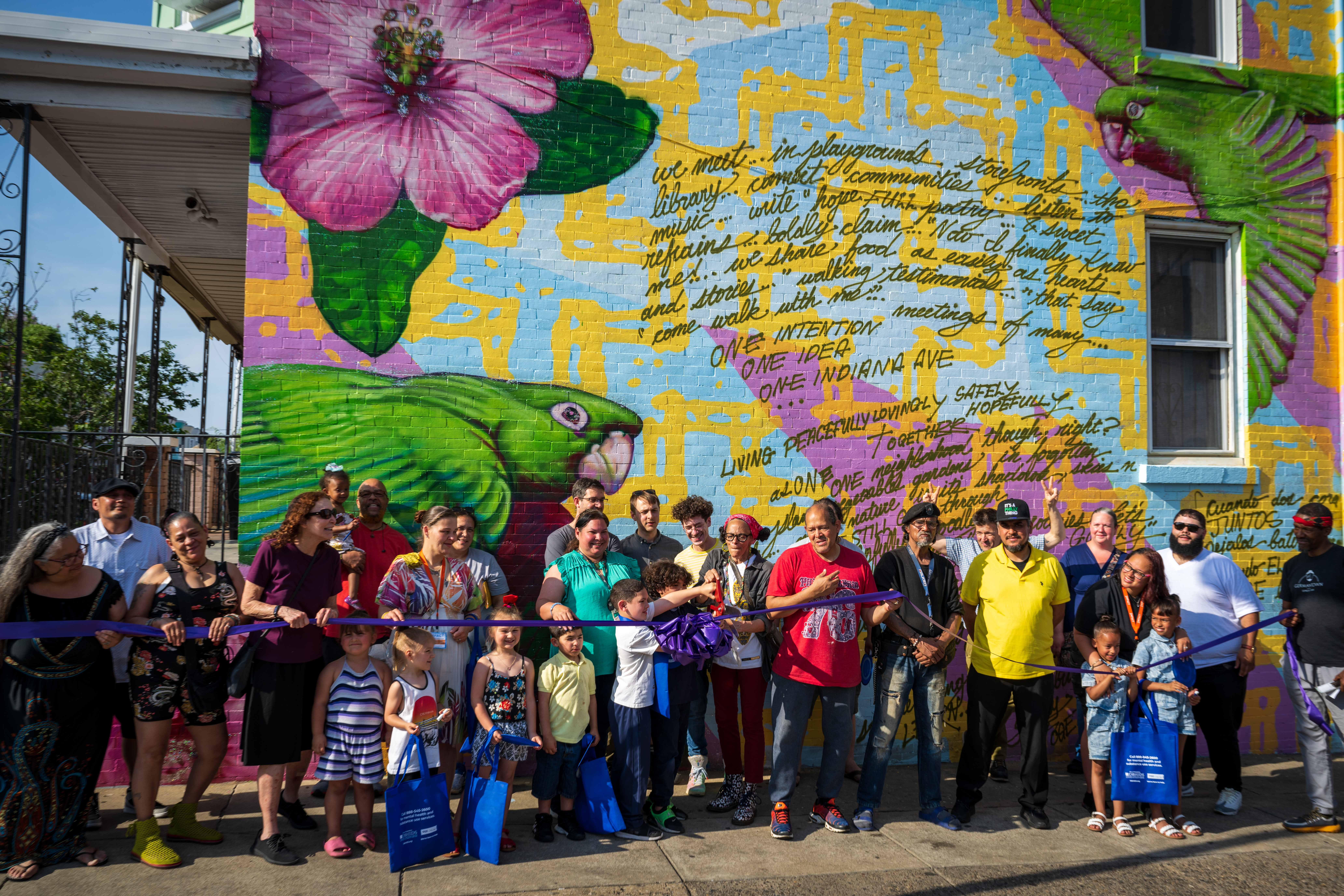
That was something that was so fulfilling. And then I got to see art become a lifeline for young people. It went far beyond my ability to predict what art could do.
When Anti-Graffiti closed, we became the Mural Arts Program—a pro-art program. But I would say those early years were very formative in my thinking about art and social justice. I think it was about equity: everybody should have access to art. It was about using art to serve a social and civic purpose—making our environment look better, but also taking into account our lives.
The third thing is the young people who were helping to create the art were learning all these skills and redefining the way they saw themselves. They started to see themselves in terms of the talent and potential that they had, and that was extraordinary.
So, as we built Mural Arts, we constructed it to never lose sight of what communities think and feel and believe, and that the power of young people to change was really in our hands. The adults needed to provide young people and young adults with every opportunity and option possible.
We've been relentless in making sure our program is both aspirational and embraces beauty, but is also highly pragmatic and really concentrates on moving the needle in very concrete, tangible ways.
Mural Arts Philadelphia has transformed from an anti-graffiti initiative into a global model for healing and restorative justice through public art. Can you talk about that evolution and how shifting from a ‘prohibition’ approach to a ‘pro-art, community-centered’ approach has shaped your perspective on art as a tool for social change and restorative justice?
First, the Anti-Graffiti Network was a bad name for that program. It was a youth development program. But there was a mandate: we could not use spray paint.
So when we became Mural Arts, we decided on a couple things. We would not be anti-anything. We would open our doors to all kids, not just graffiti writers. And the sky was the limit because we were working with artists and we knew we were creative and we had a lot of autonomy in city government to make a difference.
Next, when we first started working in a state prison around 2002, what we saw was incredibly bleak. But when we went into the art room, we felt something different because we saw incredible talent behind those walls.
At the same time, we started working in different juvenile justice facilities, residential placements. We were working with a range of people who had talent but were also struggling with a range of issues. And we started providing art as a way of healing, lifting people's spirits.
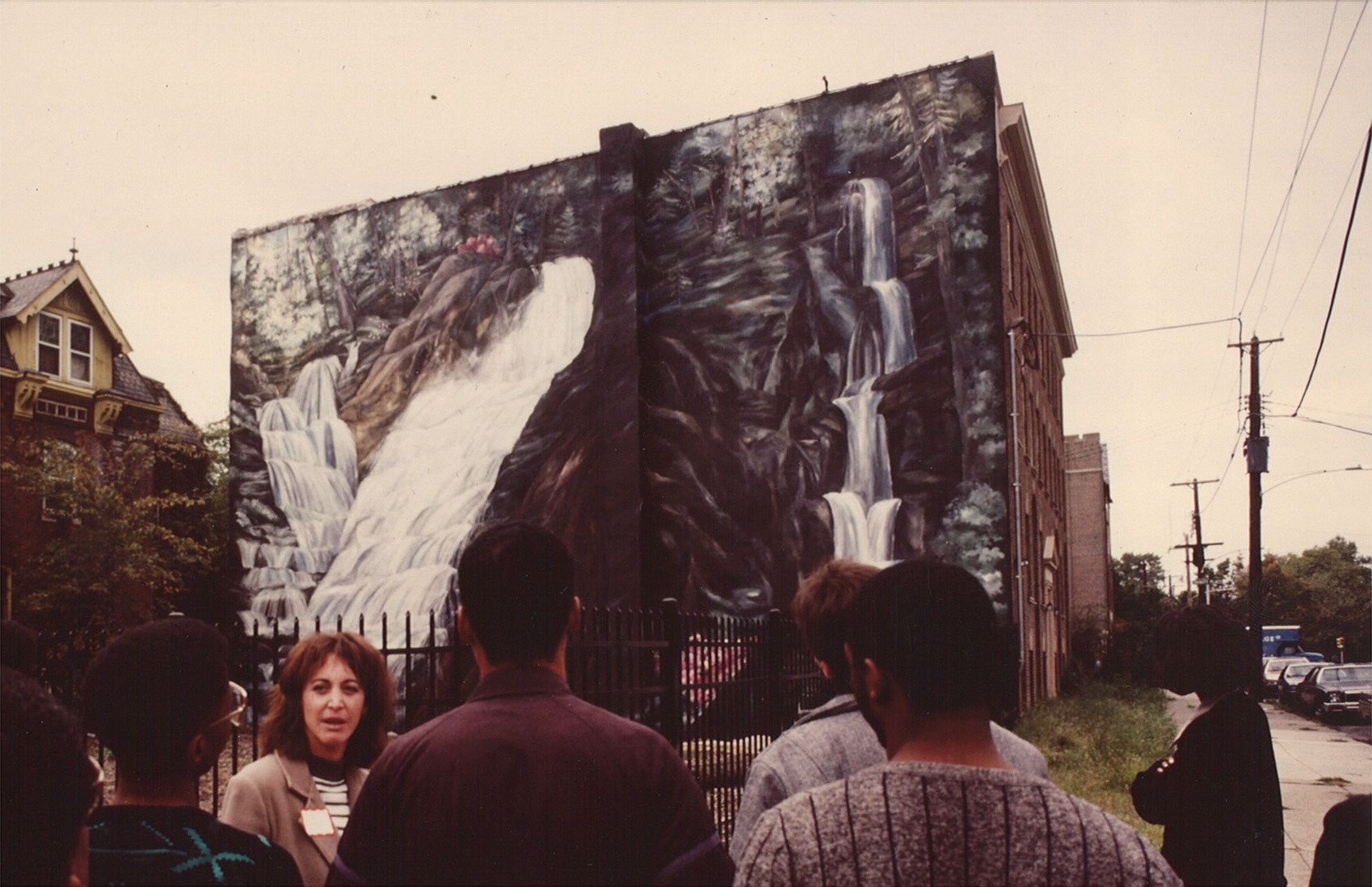
The programs were highly educational, and I think that the work was able to connect people to a larger world. And what we saw firsthand was how unfair our world is—that some people have things and some people don't. And so how do you even begin to make up for this huge gap that exists in our world?
We felt like art was—and I still feel this today—the quintessential multitasker because it's doing several things at the same time.
We started our Restorative Justice Program around 2007, and we call it that intentionally because the tenets of restorative justice call on all of us to heal together. When crime and violence happen, the narratives of our lives are really broken.
But, through art, through listening, through being empathic, we understand that when things break, the reverberation is profound. It's not like one person is impacted—everybody is. And so it calls on us to come together, to reach toward each other, to move toward the light.
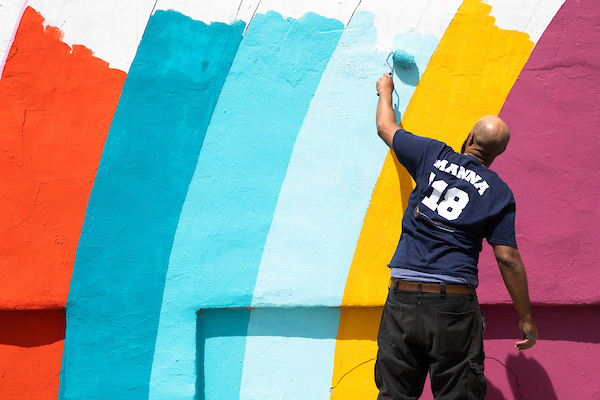
And that's why we call it Restorative Justice. We read a lot about restorative justice at the time—Howard Zehr is like the godfather of restorative justice in our country. We invited him here to facilitate a training session. We took it really seriously, and we brought together young people, people in neighborhoods who had felt impacted by crime, victims, and advocates. We worked with all these different groups to try to get people to see their better angels, and to rise above the trauma and the pain to think collectively, collaboratively.
And what we saw was healing take place—people started to change within themselves, and they were also changing the look of the city through public art-making. So it was a wonderful mirror of positive change.
That was a sign to us that we needed to keep building the program out. We have many different programs at Mural Arts, but Restorative Justice is one that I love very dearly. We work in prisons. We work with young adults coming home who've been impacted by the criminal justice system, and we also just started working in the county jail.
In a city as complex and layered as Philadelphia, why did you choose to pursue your career here? What is it about Philly that continues to inspire and challenge you?
Well, I think it was kind of picked for me in a sense because I had come home. I grew up in Margate, about an hour from here, and I was coming up to Hahnemann Hospital for treatment for lupus, and I was reading about Philadelphia politics. It was so interesting to me that this was the first time there was a Black mayor, and there was all this excitement.
When I read about what Wilson Goode was trying to do about graffiti, just because of my own love of art, I was really drawn to the idea. And I've always liked Philadelphia. I didn't really know it that well, but I was intrigued by this program, and I wrote the mayor a letter. Somebody got back to me who knew my former boss in Los Angeles, and I ended up getting hired.
I made $12,500 a year. We didn’t have great art supplies—we had house paint and big brushes—but I was so inspired by Philadelphia. I was moved by all the different communities and people's love of their communities. I was intrigued by block captains, and how people were incredibly invested and would move a boulder up the mountain to change their neighborhood. It was really remarkable.
People didn’t have resources, but they had tremendous will and drive to do right by the city, by their community. And every community was different and varied. It reminded me of a beautiful quilt—every part of it is beautiful, and then it comes together and creates something even more beautiful. Philadelphia really called to me in a deep way from the early years, and I became so invested in the city that I never wanted to leave.
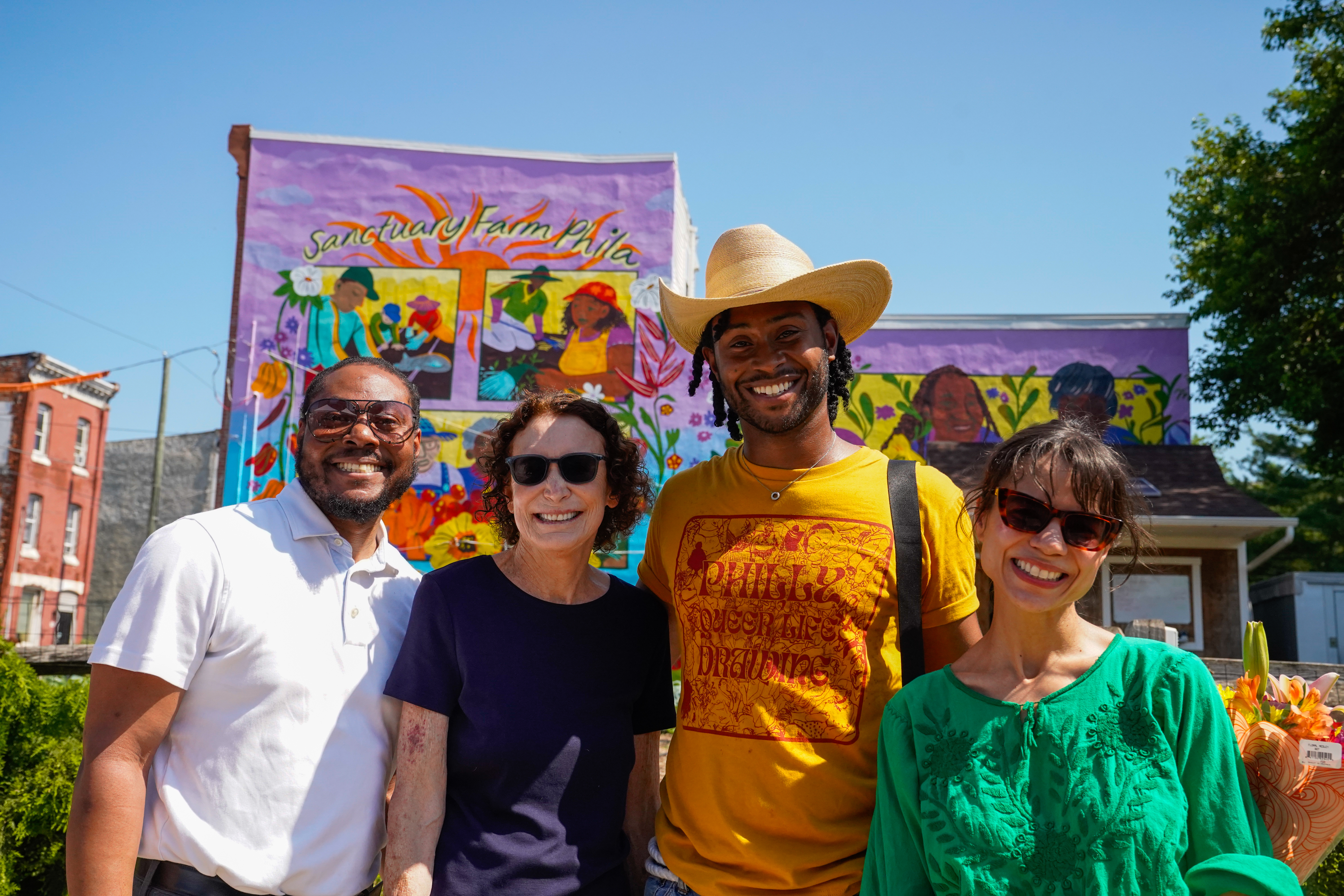
Philadelphia is often nicknamed a city of neighborhoods. It’s super diverse. People come from all over the world. How have you seen Philadelphia’s global identity evolve through art over the years? Where are we now versus when you first began?
When I first started, Philadelphia—this was in the 80s, before Ed Rendell was mayor—there was no Avenue of the Arts. There were art galleries, and you felt that the city was percolating with creativity, but it didn’t seem organized. Philadelphia was struggling, quite frankly.
Fast forward to today, Philadelphia has world-class museums, the orchestra, the opera, hundreds of nonprofit arts organizations, and a wealth of artists with incredible talent. Mural Arts hires about 250 artists every year. We create 100 to 130 murals. We offer fellowship programs and internship programs for artists. We want to be a resource to the creative sector.
The arts are the heartbeat of Philadelphia. Consider what Philadelphia would be without the arts—it’s unfathomable. I always say to my colleagues, we should never be complacent and always advocate for the arts because it humanizes our city. It makes us better, puts us on the map. Art is at the core of Philadelphia’s identity.
Today, arts and culture are being attacked constantly. You mentioned the importance of collaboration. What does it mean to be deeply collaborative between private and public sectors, city agencies, schools, working with prisons, getting local residents involved? How has collaboration shaped your leadership style and ability to build trust?
In the beginning, I worked mostly with community organizers who told me that when you go into neighborhoods, you have to ask questions, understand, don’t assume you have answers, and acknowledge that this is someone else’s home. At the end of the day, you have to be highly respectful.
We really listened to what people wanted. People would say, “Things are either done to us, or not done at all.” We would say, “Things can change.” I learned early on that the only way public art projects would be successful was through healthy, robust collaboration between the artists and the community. Otherwise, the work would seem like it appeared “out of nowhere,” and it wouldn’t connect.
Our collection of murals—4,400 murals created since 1984—is beloved. When murals go away, people are sad because they feel the art is part of their DNA. It’s a psychic change. We tapped into this appetite for art. There is a huge demand for our work, and it’s because of what it does: it speaks to people, meets them where they are, talks about their lives. The murals are truly the autobiography of our city.
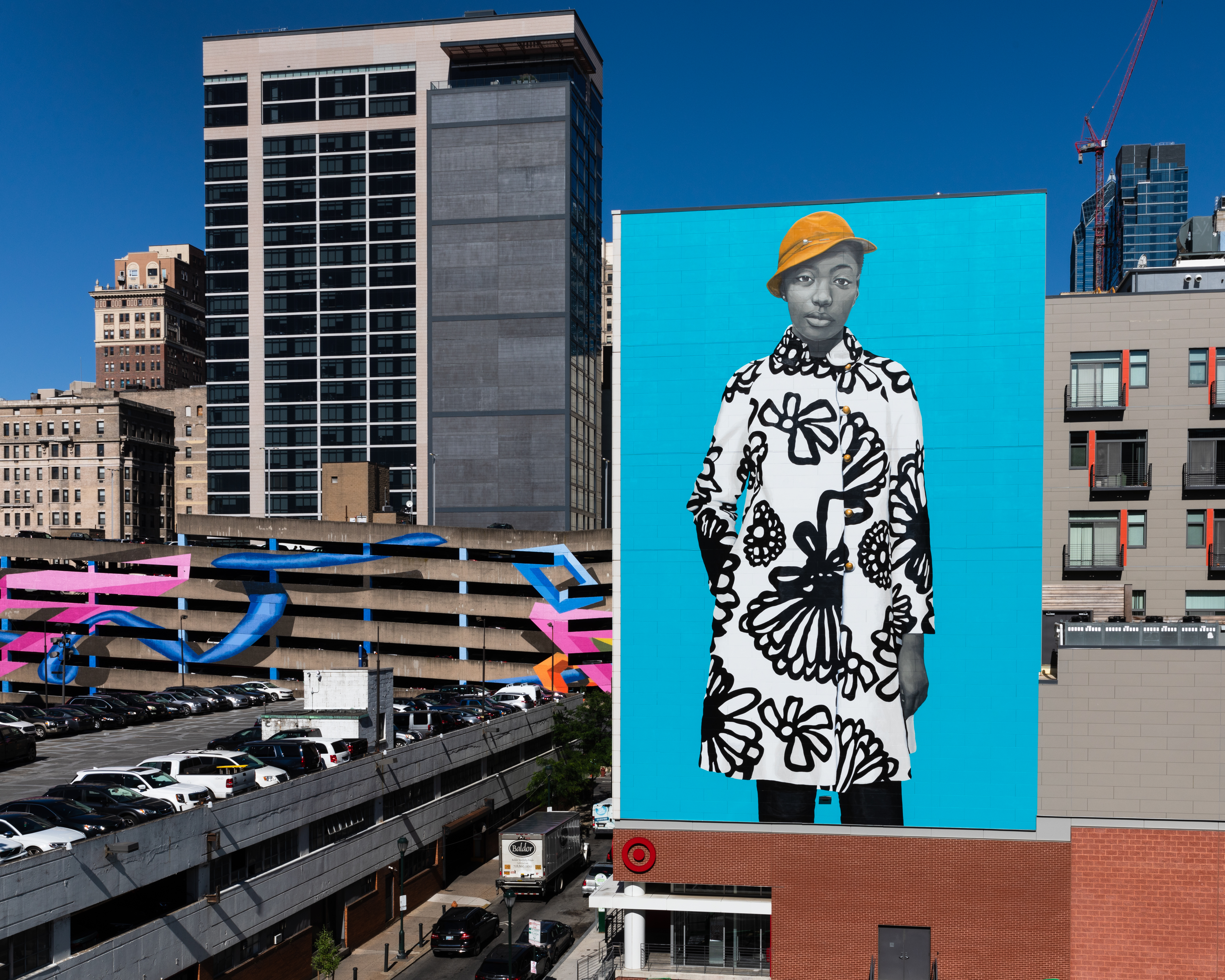
We collaborate and partner with about a hundred organizations every year. Our work is richer because of those collaborations. There is no way we walk alone in this world. As a leader, I want to surround myself with people who know more than I do, with whom I can have a great exchange. It’s important to be curious, to learn all the time, and to course correct when needed.
The give-and-take developed over the years with colleagues, friends, advocates, organizations across the city and city government makes the work richer.
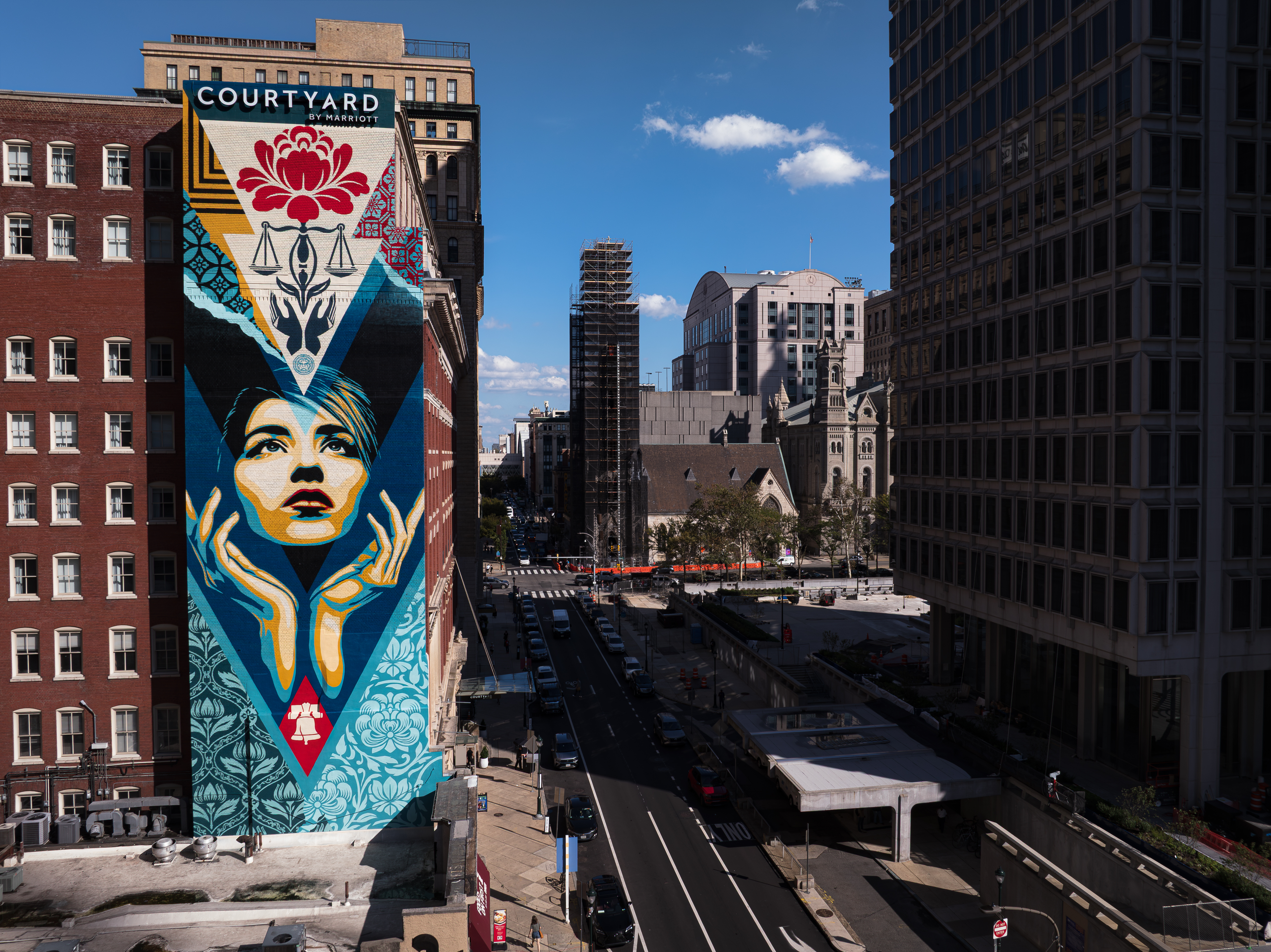
The Mural Arts Program’s work with Global Philadelphia regarding the Sustainable Development Goals has brought the UN’s 17 goals to life across Philadelphia. What did that experience mean to you, and how can art drive global goals like sustainability, especially where it’s not a priority for people?
I was at a conference at Yale a few weeks ago. The topic was climate change and the arts. Esteemed scientists said, “No one listens to us. People don’t understand us.” Our ability to connect with artists is invaluable because they translate what we’re saying.
Art is a way we learn. It’s a form of advocacy. Our work with Global Philadelphia is important because people don’t retain information—especially in the digital age. Public art in a public space acts as a constant visual reminder. The world we pass on to future generations is shaped by the beliefs and actions we choose today. So, to me, the question is: what do we believe, and how will we act on it to build a better world? A world filled with peace, hope, beauty, and safety.
I love Global Philadelphia’s Mural Art campaign because it brings something vast to an intimate scale. Public art is intimacy in public space. The campaign is a perfect example: bold, global vision, beautiful mural, and public setting.
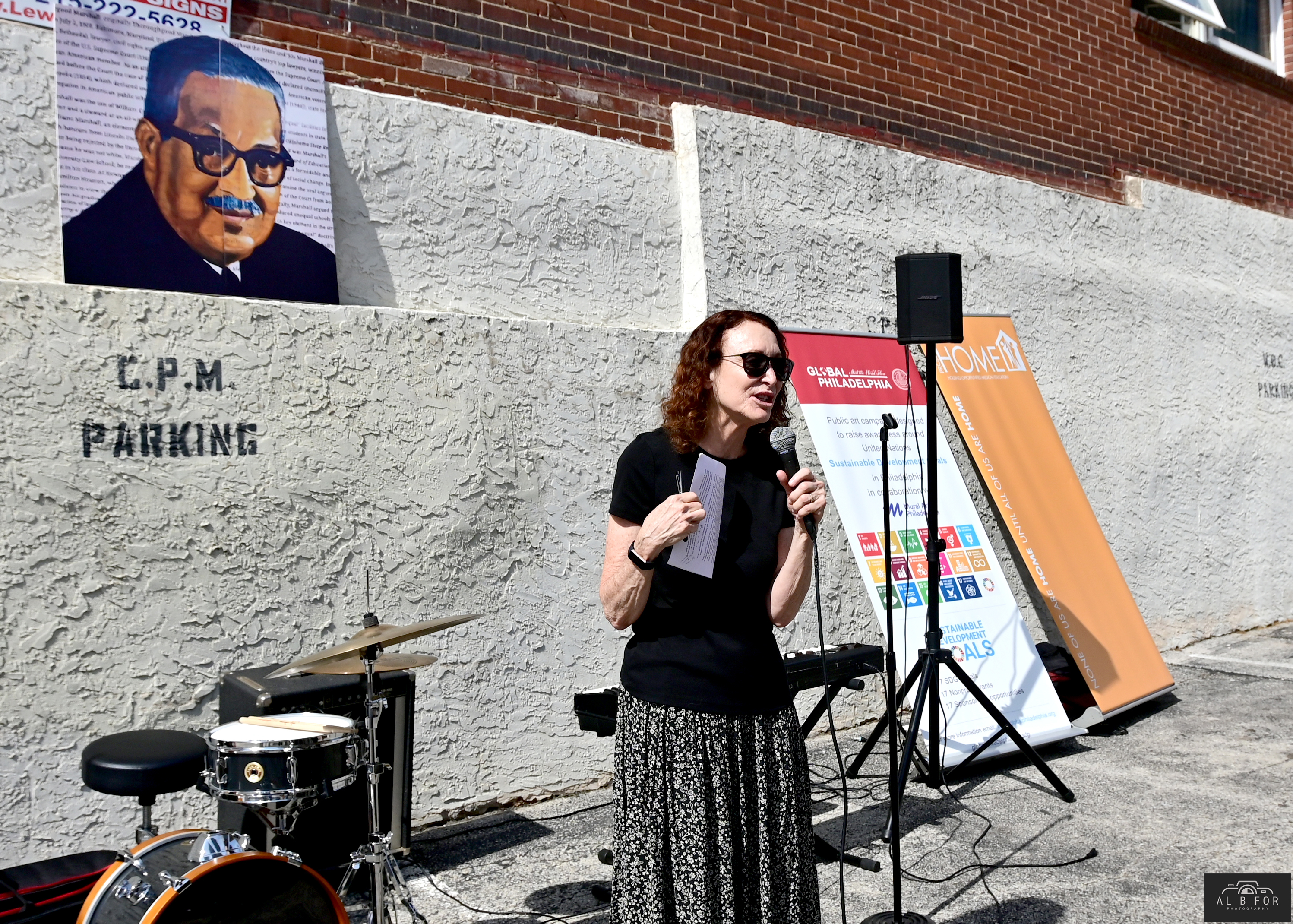
Staying with this idea of thinking global but also local, I’m really fascinated by the influence that the Mural Arts Program has had on the rest of the world. Philadelphia isn’t the only city to struggle with graffiti, crime, or poverty. Through the Mural Arts Institute—your teaching and learning practice—which helps cities around the world adopt Philadelphia’s model of socially engaged art, what have you learned from these global exchanges? How does Philadelphia’s story resonate internationally while keeping its uniqueness?
Philadelphia’s story resonates tremendously. And, different cities are intrigued by different aspects of our work—economic opportunities for artists, graffiti abatement, revitalizing downtowns, social service work.
Philadelphia is known internationally as the “City of Murals.” Almost everywhere I go, people light up when they hear about Mural Arts. But the Institute was never about replicating Philadelphia exactly—it’s much more a knowledge exchange. We’ve learned as much from other cities as they have from us. It’s fascinating to see how other artists think and how other cities work. Public art connects us globally, while highlighting both our distinctions and commonalities.
From Philadelphia to Montreal, Dublin to London, Northern Italy to Athens, you realize people are thinking alike. Cultural exchange is a way not just to create specific work, but to lift up the sector. Public art, civic engagement, social practice—that’s a discipline, and we must hone it. The Institute provides a way to tell the story of our city while helping other cities tell theirs.
Two years ago, we hosted a symposium called Created Together. It was an assembly of creatives from across the country and around the world. It was wonderful to see how people connected and exchanged information. It is easy to judge others from afar, but sitting next to someone and talking about their work changes everything.
Have any international exchanges or collaborations left a mark on you?
In 2005, we were invited to Mexico City by Diego Rivera’s daughter, Lupe Rivera Marín, which was amazing. She said, “You’re carrying on my father’s legacy.”
In 2007, students from Dolphin Arts in Dublin traveled to Philadelphia and worked with students in our art education class at Olney West High School. Together, they designed and painted a mural about global connection. Then our students went to Dublin to work on a project with the students from Dolphin Arts. Some of our students had never been outside of Philly - let alone on a plane to Northern Ireland. It was life changing.
In 2008, the Ford Foundation invited us to advise city officials on the construction of a three-mile-long ceramic mural to commemorate the 1,000-year history of the city of Hanoi. It was a huge, complicated endeavor. Workshops with young artists, the ceramic clay came from villages around Hanoi. If you Google “Hanoi ceramic mural,” you can see it—it's a landmark. Our work in Hanoi underscored that life is a journey of faith—believing in an idea and seeing it through to fruition.
Paris was another example. In 2008, the U.S. Embassy invited us to collaborate with three towns in suburban Paris to create murals with the goal of bringing communities together through art. French artists came to Philadelphia for training in our methodology; we sent artists to Paris to help the artists and communities vision and create the murals. And, finally, an artist from Paris created a mural here in Philadelphia. It was a fabulous cultural exchange.
In 2016, we worked with an artist collective in Cuba. We had to bring the paint in our suitcases, because otherwise it wouldn’t get through customs. This made the trip quite memorable!
With the growing demand for murals and engagement from various communities, how has the mission of Mural Arts evolved since its inception?
Early on, we were painting murals and working with kids. When we moved from the Department of Parks and Recreation to the Managing Director’s Office, we became part of social services. (Former commissioner) Estelle Richmond encouraged us to work with other city departments.
We started seeing that art could serve the greater good. Art could make a difference in individual lives and, by extension, on the life of our city. We linked art with public health, behavioral health, prisons, parks. Art became catalytic. We created a prison reentry program, a same-day work program for folks experiencing housing insecurity, and programs about environmental and climate justice. We’ve been opportunistic in addressing key city issues with artists and creative thinkers because traditional interventions often fail.
How has the Mural Arts Program adapted to today’s precarious environment for arts and culture, especially with funding challenges and backlash around diversity and inclusion?
This is a precarious time. History shows culture is often the first target when cuts happen. We approach our work practically, making it relevant to citizens. All 17 city council members speak glowingly about Mural Arts, but that trust took 30 years to build.
We sit at the intersection of social, civic, public, private, and aesthetic realms. People often ask, “What sector are you in? Public art? Education? Social services? Public safety?” We work across all of those sectors—with art as our vehicle. No guarantees exist, but being multidisciplinary, versatile, and mission-driven helps. Funding comes from multiple sources—city, state, foundations, corporations, individuals, earned income—to avoid reliance on any single sector.
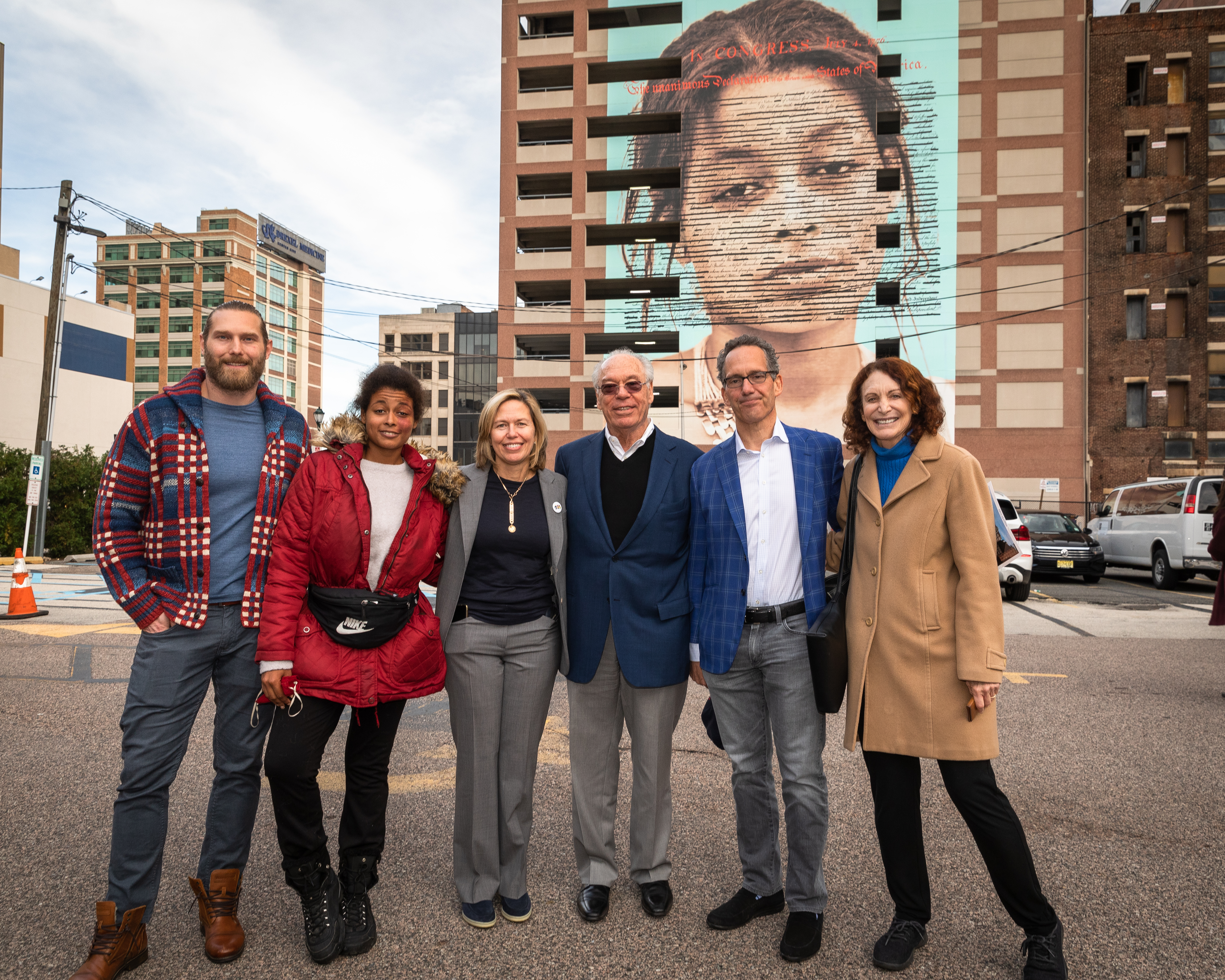
After discussing your career, it seems your organization mirrors your own path: moving from traditional aspirations, following passion, and blending skills into something unique. What advice would you give young artists or professionals following their dreams?
Don’t pull back from your imagination, creativity, or passion. Have the courage to follow your heart, even if it takes multiple jobs. Be curious. Be humble and open to critique.
My dad advised me about law school—if I wanted to go, fine; if not, have the courage to not go. My brother, a lawyer, ultimately talked me out of it, urging me to ask Mayor Ed Rendell about starting a public art program, which started my arts career.
One final question: out of all the thousands of murals, any specific works that left a lasting impact on you?
Healing Walls is one that stands out. We worked with men in state prison, victims of crime, and advocates. We brought people together to discuss the consequences of crime and to invest in communities.
At first, there was tension. But during the painting process, the power dynamic shifted. Men in the class taught painting techniques to other participants. Deep conversations emerged. At the dedication, victims and family members looked at an angel they painted together and said, “That’s our angel.” It became their North Star.
People in jail began seeing themselves as human, not just punished, and community members recognized shared pain. It was like, together, we entered a state of grace. The connections we made became more important than the murals themselves.
Cover photo: Brotherly Love dedication, June 8, 2024. Photo by Steve Weinik.
